Category Archive for Japan Earthquake
MERMAID BAR IN ROPPONGI. JAPANESE GIRL IN BIKINI, SWIMMING IN FISH TANK. HOSTESS CLUBS, TOKYO JAPAN.
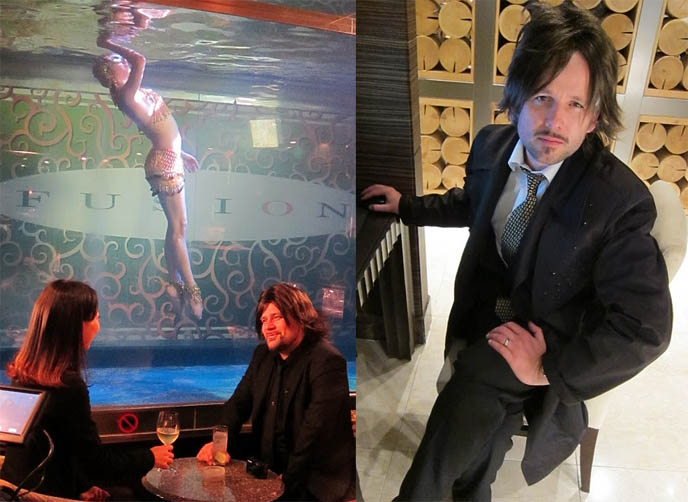
I’m often asked: what’s it like, being on travel TV shows? What goes on behind the scenes? I’m going to attempt to answer these questions by bringing you more photos from the NRK Norway documentary shoot, which took place last October-November in Tokyo. (Photos by Naomi Rubin, my First Mate fixer.)
Every show requires weeks of planning. Naomi and I bring our ideas to the producers, and when they’re approved, we make precise arrangements with the locations and people involved.
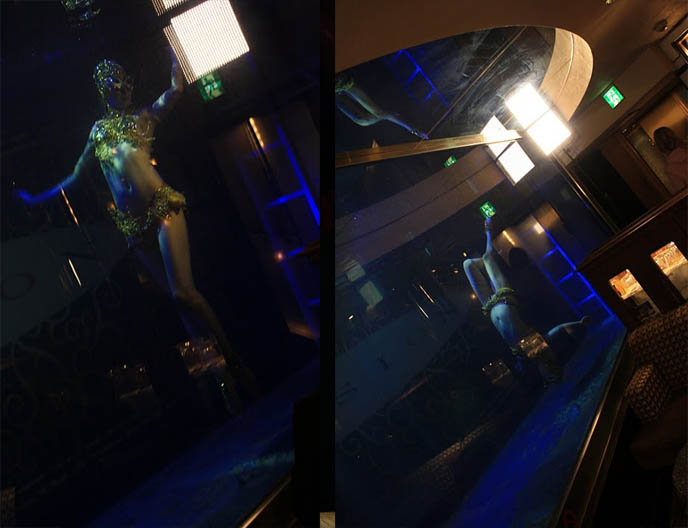
In this case, the producers had heard of a bar where a real-life Ariel swims in a giant tank. We found Mermaid Fusion, a hostess bar in Roppongi, and got permission to bring in our cameras at an exact date and time. (Schedules are tight and days are long, while working in the field.)
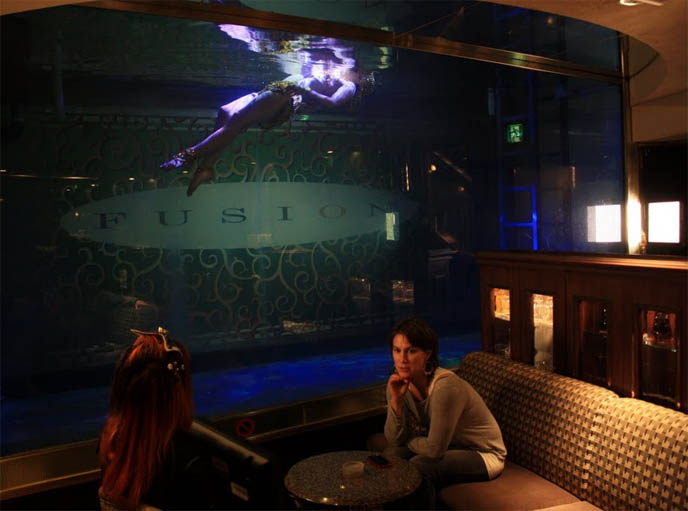
We didn’t have time to scout out the location beforehand. Thankfully, the lighting was adequate — and what a scene! Clad in a gilded bikini and mask, a Japanese swimmer gulps air from the top of the tank…
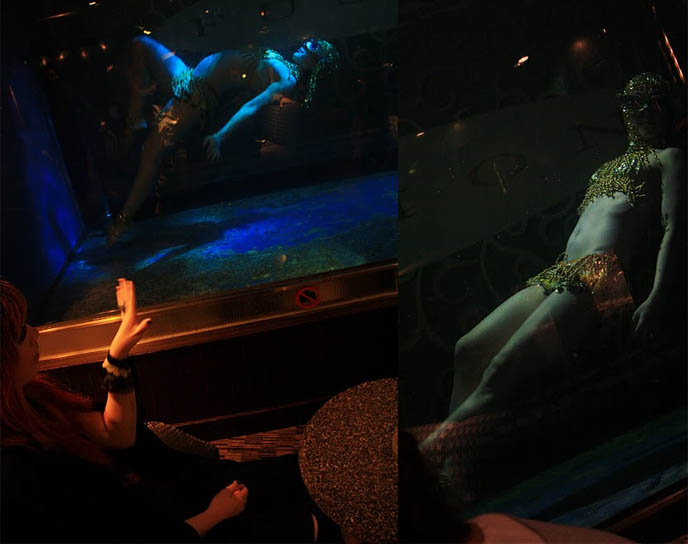
Then she submerges herself into the abyss, gracefully flipping her limbs through the water. Beautiful.
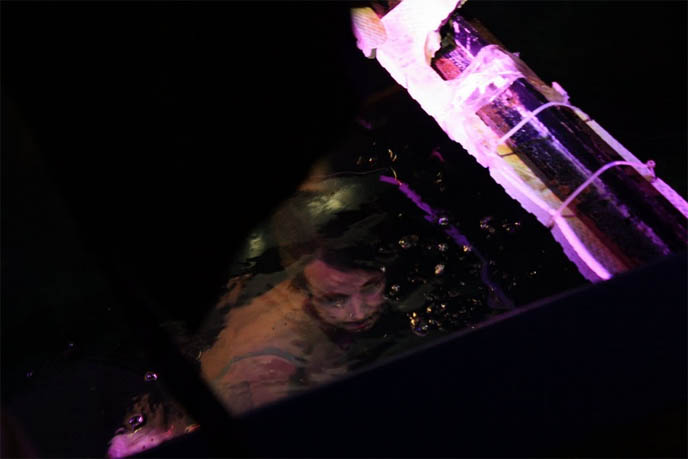
The Prince of Norway, host Ari Behn, wanted to be a “mer-man.” After much cajoling, we convinced the Mermaid Bar owner to let him enter the tank. The murky water and narrow but deep space is harder to swim in than you’d think.
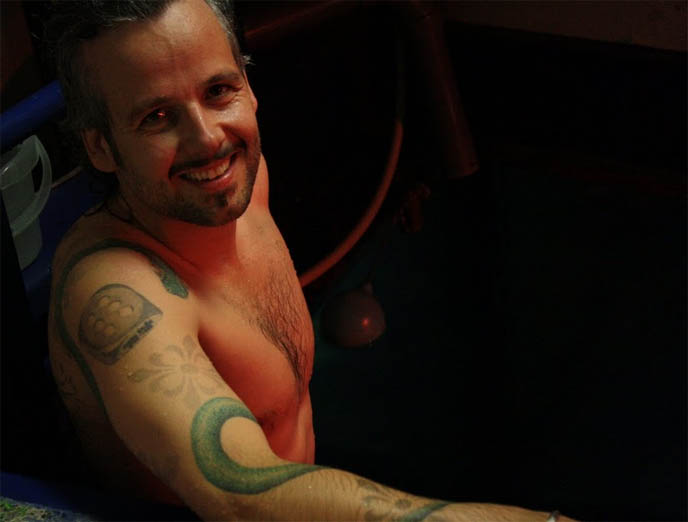
Ari has a magnificent tattoo of a winding snake. The tattoo artist used a meticulous dotted effect, which I’ve never seen before.
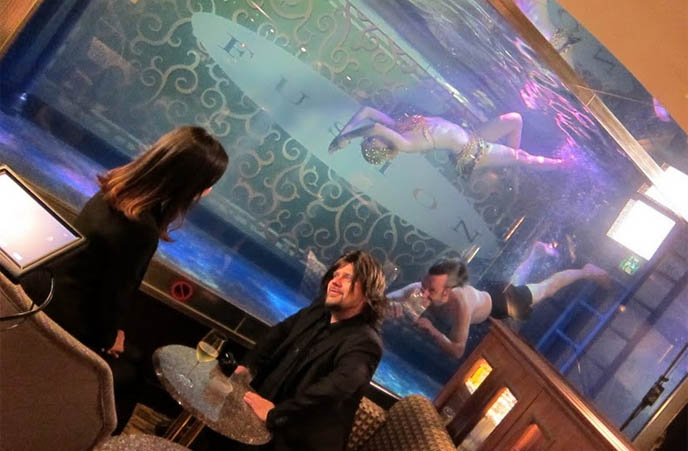
We also cast the girl who Per is romancing (she’s a hostess at the bar). The lines aren’t scripted, but the scenes and storylines are prepared in advance.
Soon, I’ll upload clips from the Norway TV show, so you can see the action yourself!
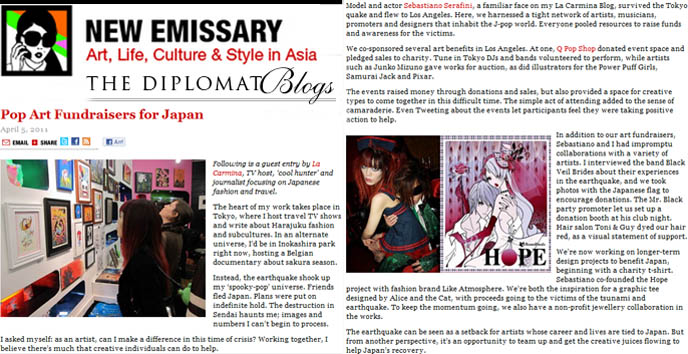
PS: I did a guest post for The Diplomat, an Asia-Pacific current affairs magazine. It’s about how artists can work together and get their creative juices flowing, to help Japan’s recovery. The article is after the jump and here.
Got any questions about what goes on in a travel television program? Or TV shoots in general? Leave a comment, and I’ll do my best to fill you in.
Song of the Day: Every New Dead Ghost (An underrated Goth rock / post punk band.)
SHARE & COMMENT
20 Comments
JAPAN EARTHQUAKE SURVIVOR INTERVIEW: LA WEEKLY MAGAZINE. ANNOUNCING THE HOPE T-SHIRT PROJECT TO HELP RECOVERY!
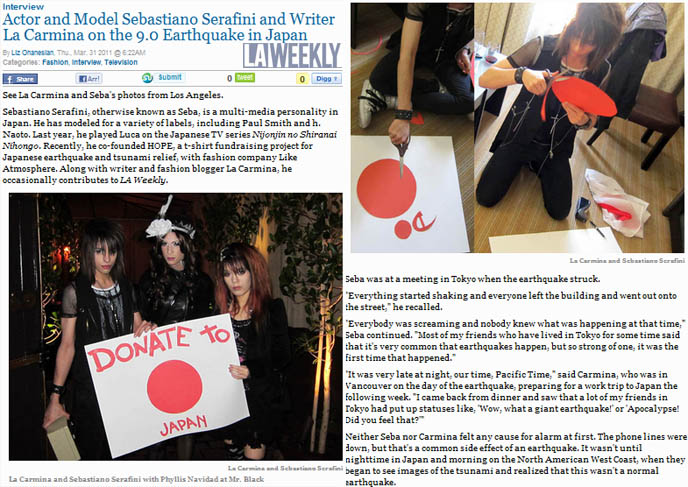
Today, La Carmina and Sebastiano are featured in an LA Weekly interview and 33-photo slideshow. (Keep reading for the story, and the announcement of our new charity t-shirt!)
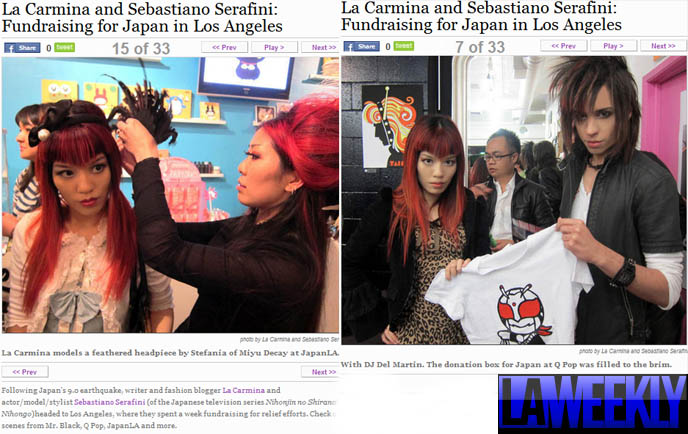
Liz Ohanesian writes about our wrenching experiences with the Japan earthquake and tsunami, and our continued efforts to fundraise for the victims. We couldn’t have made any of this happen without you — so we send our heartfelt thank yous.
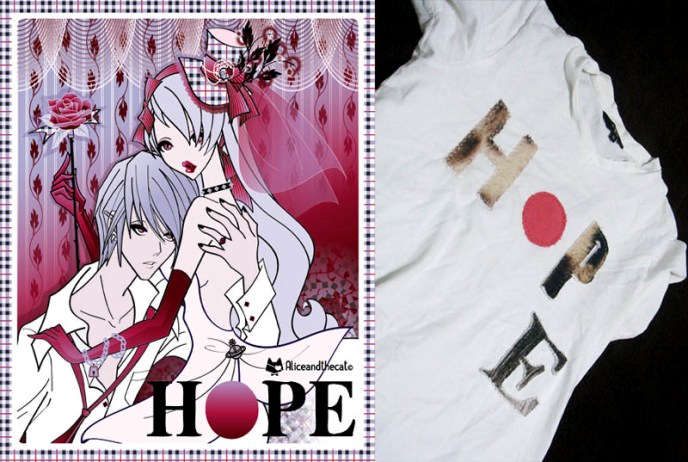
Announcing… a collaboration t-shirt to benefit Japan! Sebastiano co-founded the Hope project with Like Atmosphere (a Japanese fashion brand he models for). He will be the main model for a line of t-shirts, with proceeds going to the victims of the Japanese tsunami and earthquake.
La Carmina and Seba are the inspiration for the t-shirt above, designed by Alice and the Cat. (You’ll recall that the artist previously drew images of me and Seba.) The charity shirts will be available for sale soon; please check my blog and sign up for the mailing list (top right sidebar) to be the first to know.
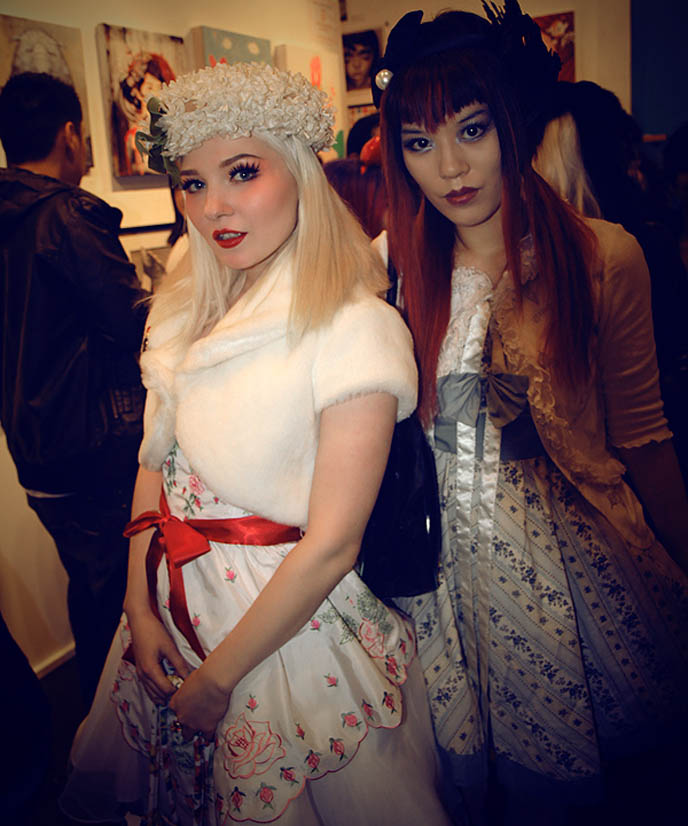
Please take a moment to read our LA Weekly interview below and here, and check out the slideshow. (Photo above and below by Doe Deere of Lime Crime.)
Actor and Model Sebastiano Serafini and Writer La Carmina on the 9.0 Earthquake in Japan
By Liz Ohanesian
Sebastiano Serafini, otherwise known as Seba, is a multi-media personality in Japan. He has modeled for a variety of labels, including Paul Smith and h. Naoto. Last year, he played Luca on the Japanese TV series Nijonjin no Shiranai Nihongo. Recently, he co-founded HOPE, a t-shirt fundraising project for Japanese earthquake and tsunami relief, with fashion company Like Atmosphere. Along with writer and fashion blogger La Carmina, he occasionally contributes to LA Weekly.
On the Sunday following the earthquake, Seba arrived in Los Angeles. I had picked him up from the airport and we chatted a little bit about what had happened when he was in Tokyo, but we didn’t discuss his experience in detail until the following week, after Seba was back in his native Italy and Carmina had returned to Vancouver.

Seba was at a meeting in Tokyo when the earthquake struck.
“Everything started shaking and everyone left the building and went out onto the street,” he recalled.
“Everybody was screaming and nobody knew what was happening at that time,” Seba continued. “Most of my friends who have lived in Tokyo for some time said that it’s very common that earthquakes happen, but so strong of one, it was the first time that happened.”
“It was very late at night, our time, Pacific Time,” said Carmina, who was in Vancouver on the day of the earthquake, preparing for a work trip to Japan the following week. “I came back from dinner and saw that a lot of my friends in Tokyo had put up statuses like, ‘Wow, what a giant earthquake!’ or ‘Apocalypse! Did you feel that?'”
Neither Seba nor Carmina felt any cause for alarm at first. The phone lines were down, but that’s a common side effect of an earthquake. It wasn’t until nighttime in Japan and morning on the North American West Coast, when they began to see images of the tsunami and realized that this wasn’t a normal earthquake.
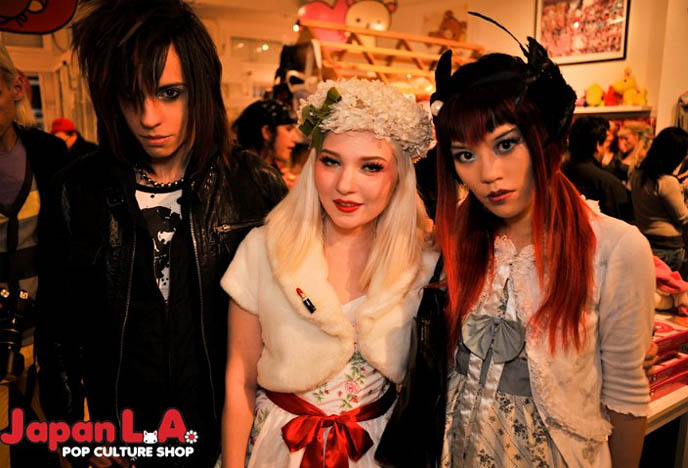
(Photo above by Orlando Welsh for JapanLA.)
For Seba, the concern was raised that night, he said, “because the aftershocks kept going for the whole night.”
“It never stopped.”
Seba couldn’t sleep. So, he checked the television and Twitter, and that’s when he began hearing about the earthquake and tsunami victims in Sendai.
“It wasn’t just the earthquake, it was the tsunami,” he said. “Most of the people died from the tsunami, not the earthquake.”
Seba mentioned that one of his friends died in the tsunami.
“We couldn’t even wrap our heads around it,” said Carmina. “First the earthquake, then the tsunami… it was too much to handle.”
On top of that, there was the threat of nuclear meltdowns.
Seba had called the Italian embassy and was told that he should try to leave the country. He had also heard from his mother that people were leaving Japan to return to Italy. The second time he called the embassy, though, he was told he could stay. However, other foreigners in Japan were trying to get back to their home countries. It was confusing.
“What we were seeing is a lot of our friends who are foreigners were trying to leave and were already having problems,” said Carmina. “They couldn’t find flights to Europe, so that was another reason why I thought maybe it was best if we tried to get [Seba] out of here.”
Two days after the earthquake, Seba realized that he had to leave. However, trying to get a flight from Tokyo to Europe was no easy task.
“If you tried to go through a Japanese travel agent, it was impossible,” said Carmina. “So, what we did was call my travel agent, who is in Canada, and said ‘What can you get? Is it LA? Is It Hong Kong? Is it Italy?’
“At this point, we were thinking, let’s just get Seba out of here, who cares where, ideally a place where he knows some people, even Vancouver, but really, whatever flight he could get.”
Seba was able to get a direct flight from Tokyo’s Haneda Airport to Los Angeles International Airport.
“Los Angeles was a great option,” said Carmina, noting that Seba had first visited the city last December. “We had such a good experience and met a lot of supportive people, so we thought that if he comes to LA, we can harness all of these great supporters and do something for Japan here.”
Carmina flew down from Vancouver to meet Seba and they spent the following week working on ways to help Japan from abroad. They collected donations for Doctors Without Borders at clubs like Mr. Black and co-sponsored fundraiser events at Q Pop and JapanLA.
After one week, Carmina returned to Vancouver and Seba was able to fly to Italy.
“Right now, I’d rather stay with my family in Italy, at least for a few weeks, because they are very worried and I haven’t seen them in a long time,” said Seba. “At some point, I need to go back [to Tokyo].”
Seba is currently facing a situation that has perhaps affected other non-Japanese residents of cities affected by the earthquake. Should he go back and, if so, when?
“Many things have changed. Many live have changed,” he said. “But, for the people who stay in Tokyo, they’re trying to stay normal because they aren’t planning to leave. I can understand that. ”
He continued, “I need to go back because my life is there, but, I guess, even with my job…I don’t think it will ever be the same.”
What was your personal experience with the Japan earthquake and aftermath? How has your life changed because of it?
Japanese Word of the Day: Roshin = Nuclear reactor core
Song of the Day: Noisuf-X- Toccata del Terrore





 LA CARMINA
LA CARMINA






